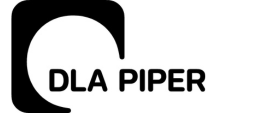Captive insurance has experienced significant growth globally in recent years, driven by hard market conditions, emerging risks and increased volatility. Statistics reveal a steady increase in the number of captives over the past four years, rising from 5,879 in 2020 to 6,181 by the end of 2023, according to the Captive Managers and Domiciles Rankings + Directory 2024 published by Business Insurance.[1] Captive insurance companies are also increasingly used by Forbes 1000 and Fortune 500 companies to manage complex and emerging risks.
Captive insurers, or "captives", are wholly owned subsidiaries created to provide insurance to their non-insurance parent companies. These entities offer a form of self-insurance, allowing the insured to benefit from underwriting profits. Despite the global rise, the popularity of captives in Hungary remains low, with only OTP Bank and MOL Hungary having established captives.
Advantages of captive insurance
- Captives provide more stable and lower insurance premiums compared to the traditional insurance market, which are cyclical and can disrupt budgeting and profit forecasting. Captives achieve this by eliminating marketing expenses, lowering wages and reducing risk-taking and operational costs.
- Captives have easier access to the reinsurance market, which can further reduce insurance costs. Reinsurers are more willing to take on captive risks due to the parent company's higher standards of risk management and loss control.
- Premiums paid to captives are spread evenly throughout the year, enhancing cash flow retention and control. Claims are paid as they arise, allowing captives to earn investment income on collected premiums.
- Captives can provide the exact insurance coverage for their parent company, even for specialised risks ("customised policies") that would be difficult or expensive to insure in traditional markets, such as product liability, environmental pollution and professional liabilities.
- Multinational corporations can apply greater financial net retention at the group level, reducing insurance expenses and centralising claims control within a single group captive.
- Captives generally have lower capital requirements compared to commercial insurers.
Drawbacks of captive insurance
- Establishing a captive requires significant initial capital investment, which can be a financial burden, especially for smaller companies.
- Captives concentrate risks within the parent company, which can be a disadvantage compared to spreading risks across multiple insurers in the traditional market.[2]
- Running a captive involves various ongoing costs, including management fees, operational expenses and regulatory compliance costs. Captives also need to maintain sufficient liquidity to pay claims, and the limited risk pooling can result in higher volatility in claims.
- Captives must comply with complex regulatory requirements, which can be time-consuming and require expertise, particularly in Hungary's challenging regulatory landscape. The tax treatment of captives adds another layer of regulatory issues to overcome, varying from one jurisdiction to another. In Hungary, the insurance tax regime is particularly challenging to navigate.
- Captives often operate with limited capital, which can result in substantial out-of-pocket expenses for the parent company in the event of significant losses.
Hungary
The captive insurance market in Hungary faces unique challenges. Captives are treated the same as any other insurance undertakings, subjected to extensive administrative burdens and complex legislative requirements. This classification contradicts the European Insurance and Occupational Pensions Authority's (EIOPA) Opinion on the supervision of captives, which recognises the special characteristics of captives.[3] Additionally, there is a lack of self-organisation and self-care within Hungarian corporate culture, further complicating the adoption of captive insurance models.
Despite these challenges, there are potential pathways for growth in the Hungarian captive insurance market. One promising avenue involves the formation of small groups of entities with similar insurance interests and no conflicting ownership stakes. For this reason, ideal candidates for captives in Hungary include municipalities, public utilities, state-owned companies, and universities.
In conclusion, while Hungary may not currently be the ideal location within the EEA region to establish a captive insurance company, there is a silver lining on the horizon. Unlike Malta[4], which boasts a sound regulatory and legal framework along with a favourable tax system for captives, Hungary faces significant administrative, legislative and cultural challenges. However, these obstacles are not insurmountable. There is increasing awareness and interest among potential candidates who are beginning to reconsider their approach to the idea of opening a captive in Hungary. With ongoing efforts and reforms, Hungary has the potential to evolve into a prominent destination for captives in the long term.
[1] https://www.businessinsurance.com/biresources/2024-captive-managers-and-captive-domiciles-rankings-directory/
[2] See US Tax Court: Rent-A-Center v. Commissioner, Avrahami v. Commissioner.
[3] https://www.eiopa.europa.eu/publications/opinion-supervison the superion-captives_en
[4] https://kpmg.com/mt/en/home/insights/2022/10/insurance-captives.html.
By Gabor Pazsitka, Partner, and Balint Bodo, Associate, Schoenherr



